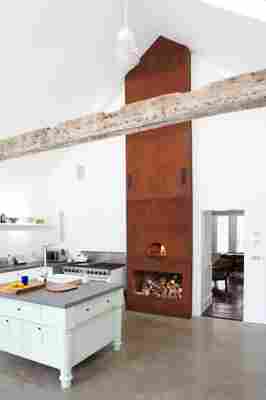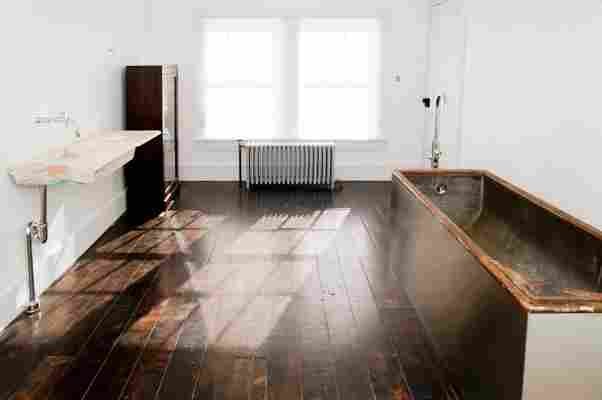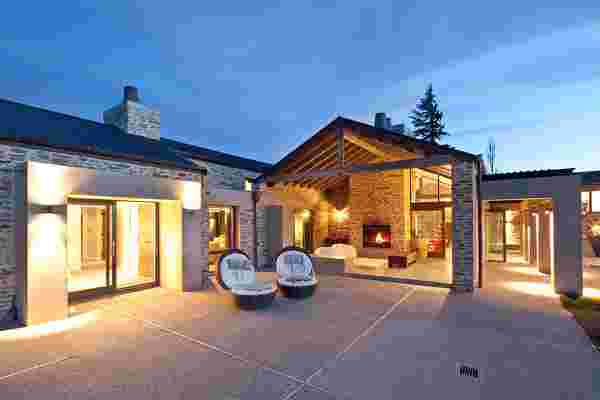A modern design project often comes most alive when there’s an element of surprise. Whether it’s a fascinating salvaged fixture or an unexpectedly earthy building material, a unique vintage addition can create an interesting tension in a home. It’s even better when there’s a personal story behind objects, or layers of meaning that go into a renovation decision, says designer Tom Givone, who has a passion for boundary-pushing projects.

The weathered patina of the steel panels over the wood-burning oven complements polished concrete floors.
Givone’s celebrated Floating Farmhouse, in upstate New York, is a prime example of modern/vintage interplay inside a home. When creating a huge kitchen addition for the 1820s farmhouse, he used massive expanses of Cor-Ten steel and concrete in the interior. “I thought in terms of the feel in this home and what elements will support that,” says the designer. The polished concrete floors reflect light, and a vast wall of glass with an overscale mullion pattern echoes the style of the home’s original windows. Vintage elements include a concrete slop sink and the mismatched collection of farmhouse chairs around the kitchen’s sleek dining table.

An 18th-century marble sink—fitted with modern plumbing—faces a vintage walnut-trimmed tub with a new stainless-steelsurround.
The juxtaposition of modernity and history carries into the minimalist guest bathroom, which features an 18th-century Italian marble sink. “The sink is beautiful in its own right, so I treated it like an object in a gallery and presented it as a work of art, even though it’s something that’s used all the time,” he says. Another vintage piece is the walnut-trimmed bathtub his uncle salvaged from a New York City tenement. Givone designed a piece of stainless steel to wrap around it, giving the exterior of the tub a modern finish.

Another project of Givone’s merges old and new in the exterior. “The unique thing here was that the owner grew up across the street. I started to play with the concept of a gravitational pull toward the old place,” Givone says of a Pennsylvania project called Twist Farmhouse. He did some rudimentary modeling, and architects helped the designer figure out the specifics for his daring plan to create a modern addition to the home.
The modern addition’s fanciful look is a nod to the owner’s childhood home across the street.
His whimsical extension to the farmhouse is anchored by five curving columns fabricated by a Chicago company that builds roller coasters and clad in anodized-aluminum siding. “I researched it before deciding on that high-tech material—it’s beautiful and it can take the bent shape,” Givone says. The lines of the siding emphasize the sinuous shape of the building and complement the original home’s clapboard siding. “The old exterior siding was lovely, so I wanted to take that element and interpret it in a modern way,” he says.
“The old exterior siding was lovely, so I wanted to take that element and interpret it in a modern way.” —Tom Givone
The end result? The owner can see her childhood home from the upstairs windows of the twisted addition—a gratifying concept for Givone. While his projects often contain unexpected juxtapositions and novel elements, the designer never innovates just for innovation’s sake, he says. His imaginings always spring from a single source—the uniqueness of the home and its inhabitants.
See more of Tom Givone’s work here.
